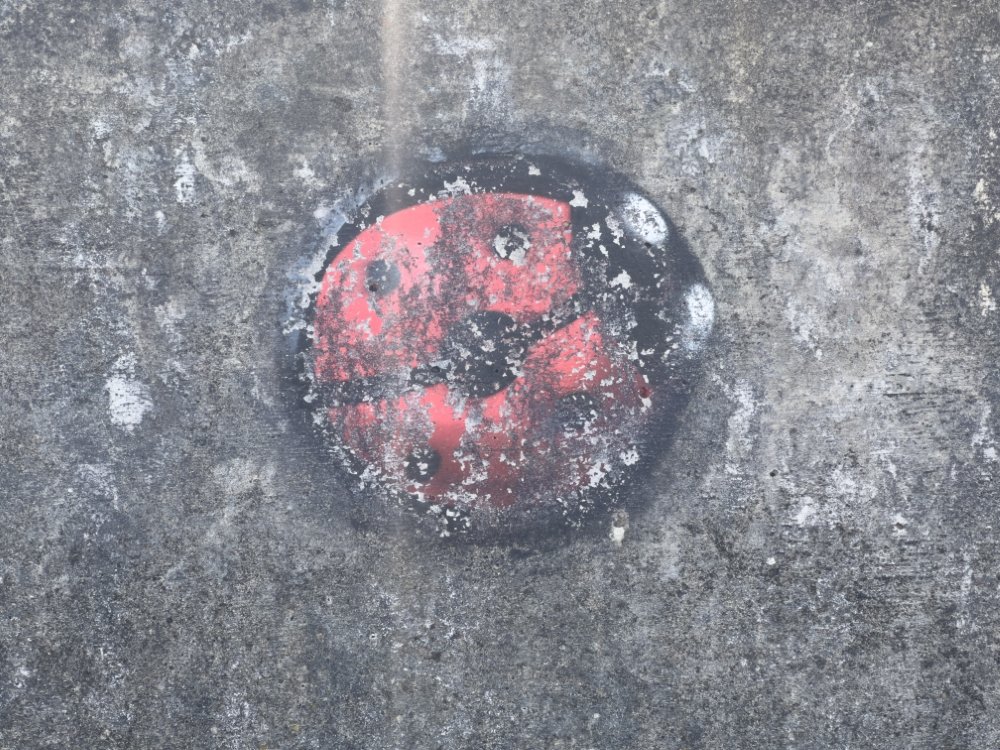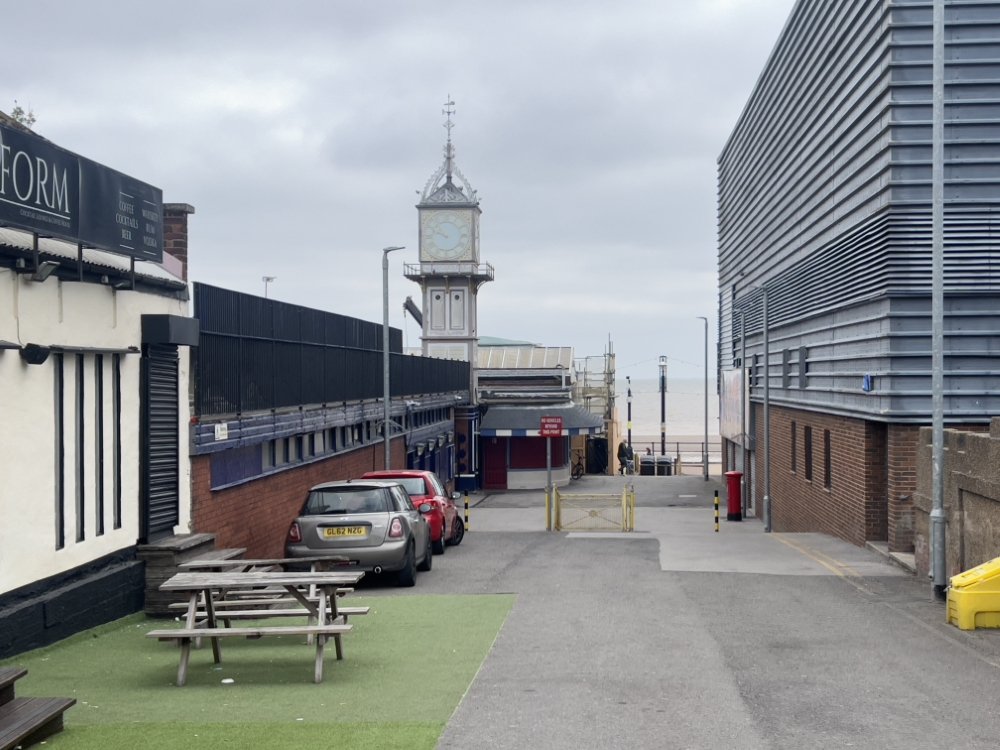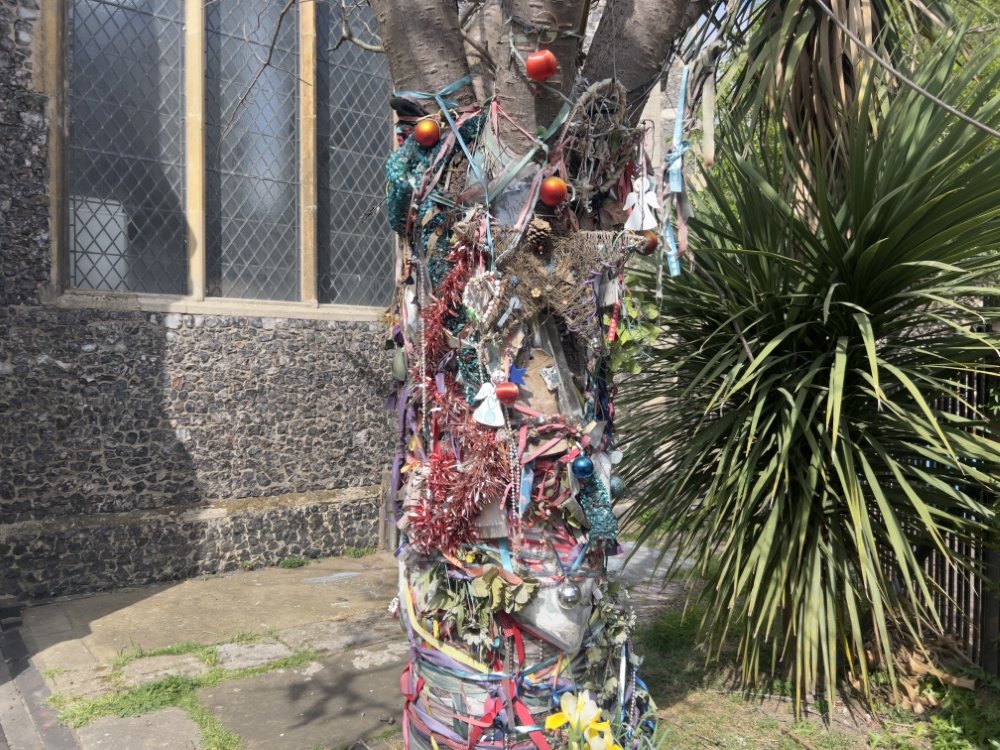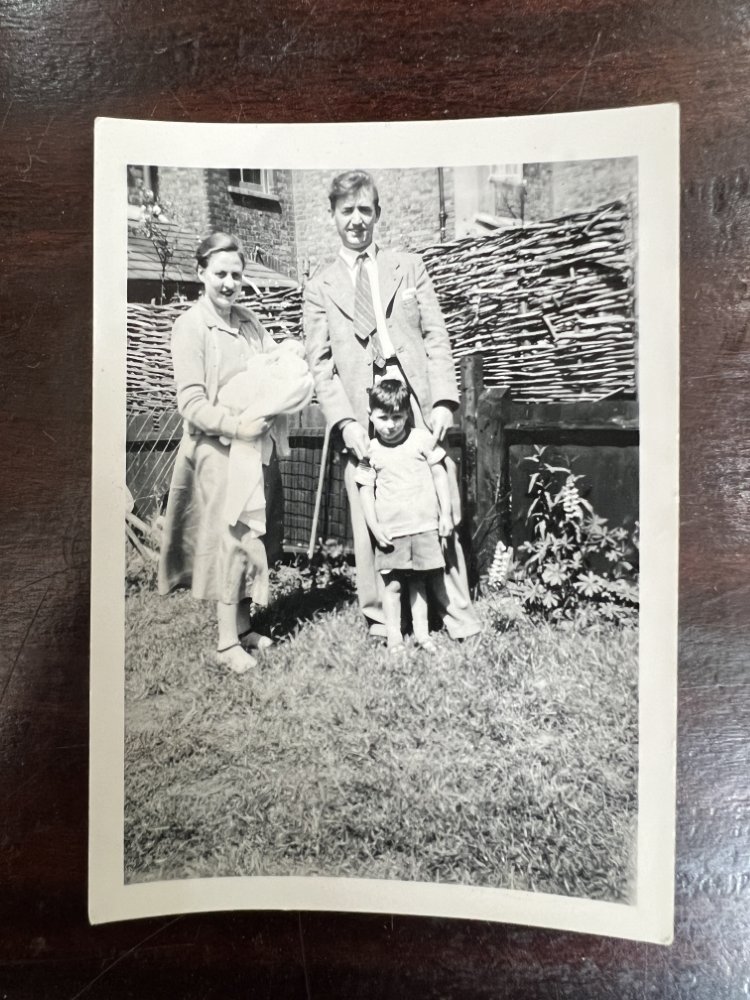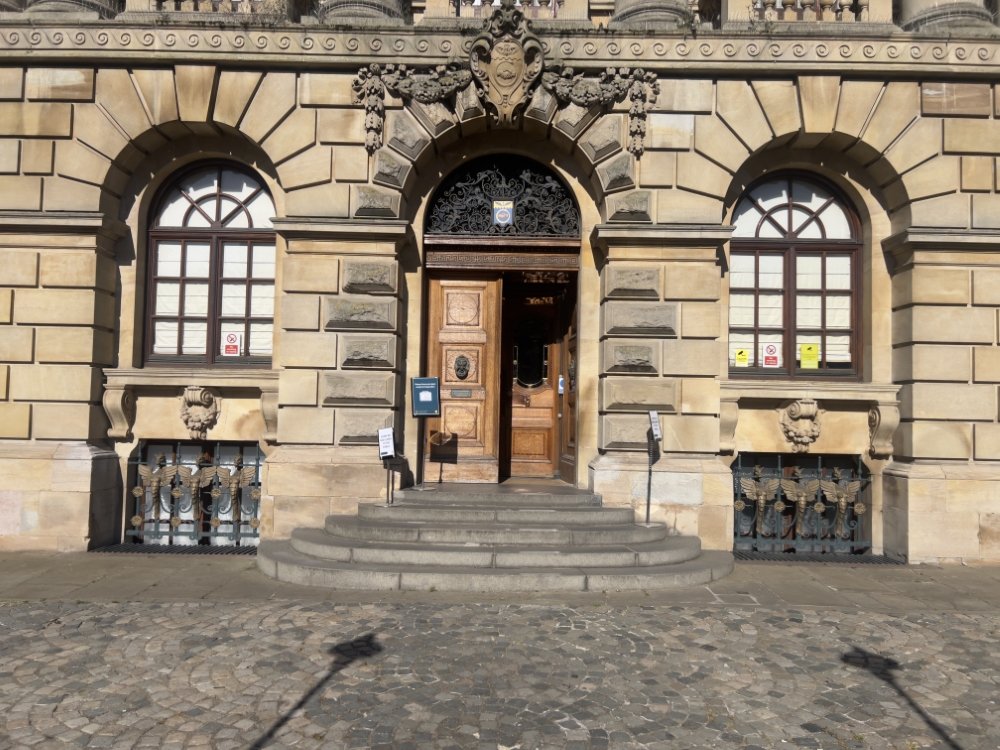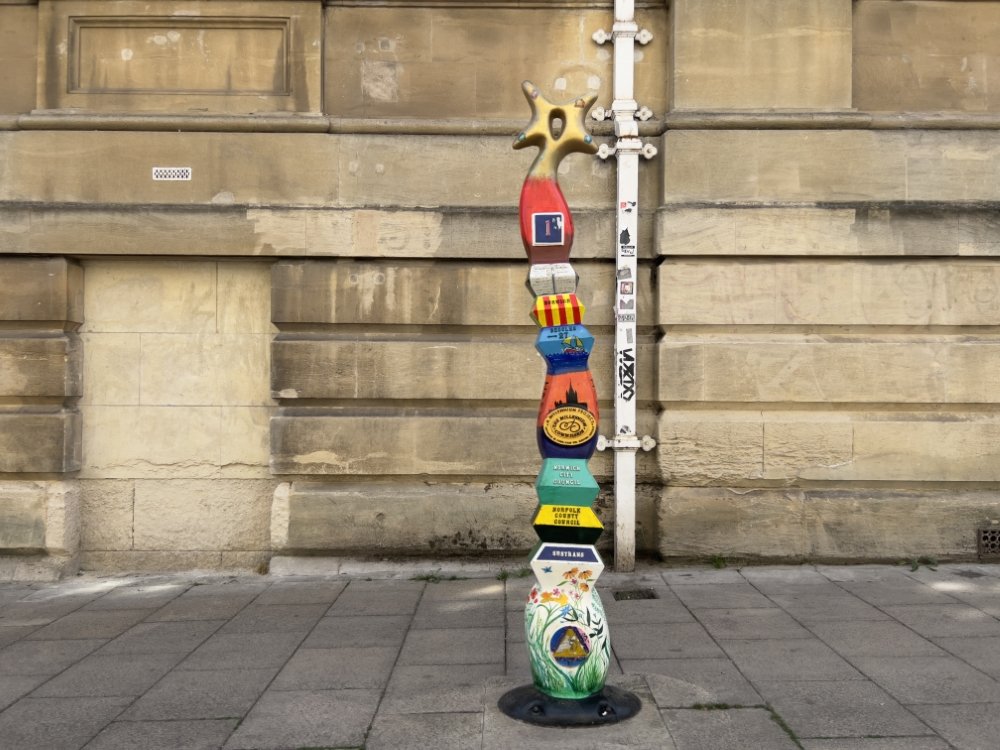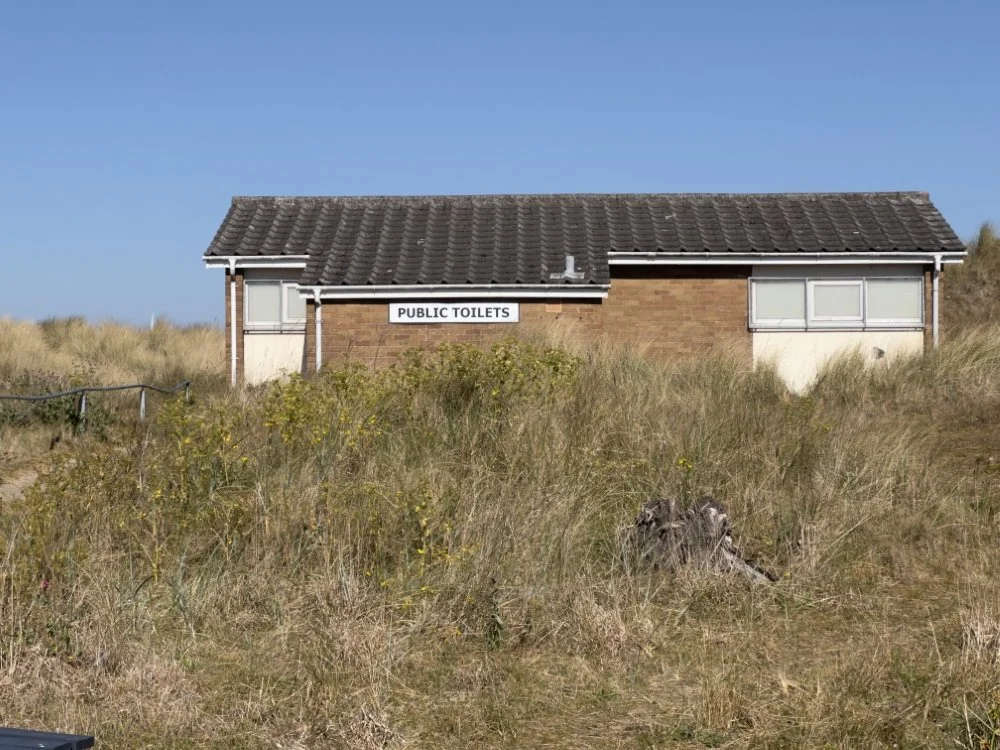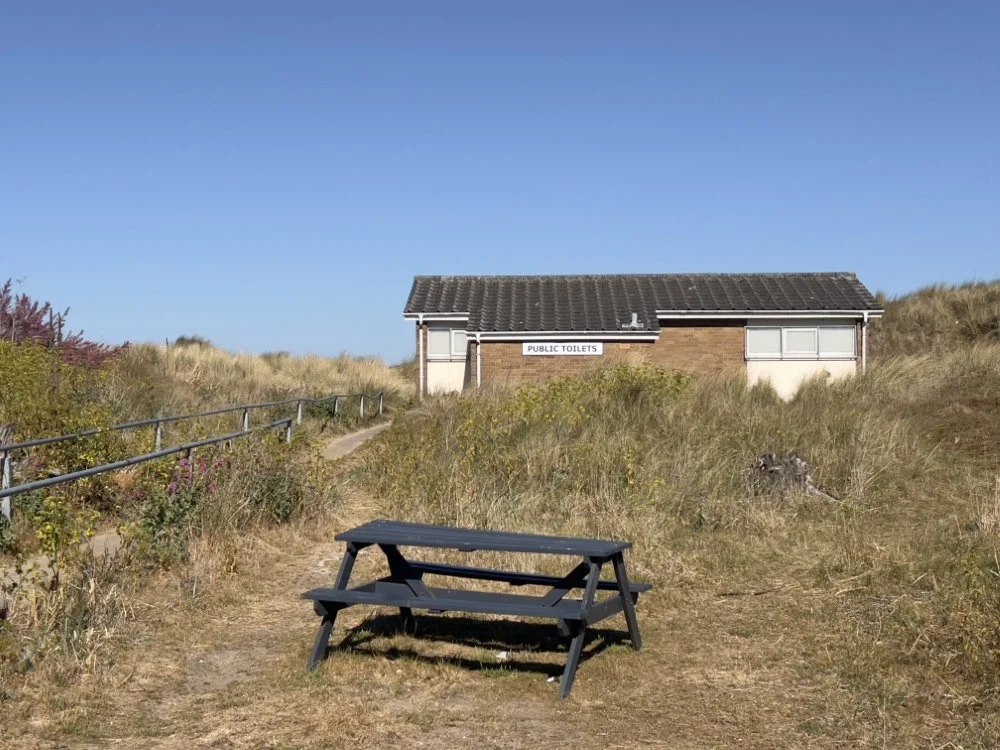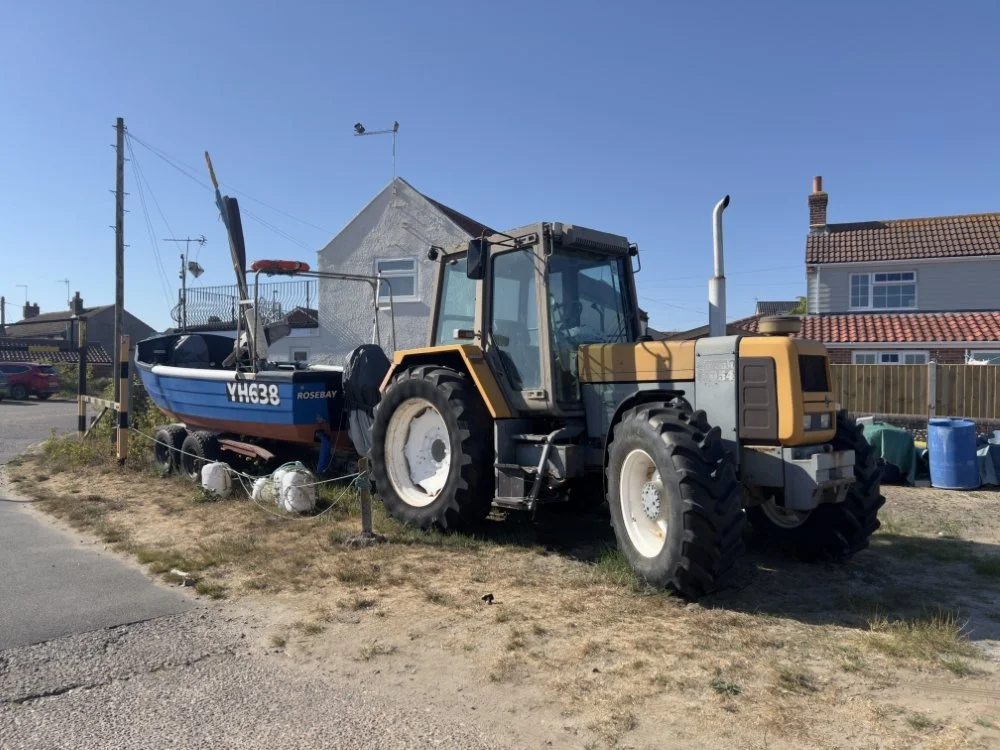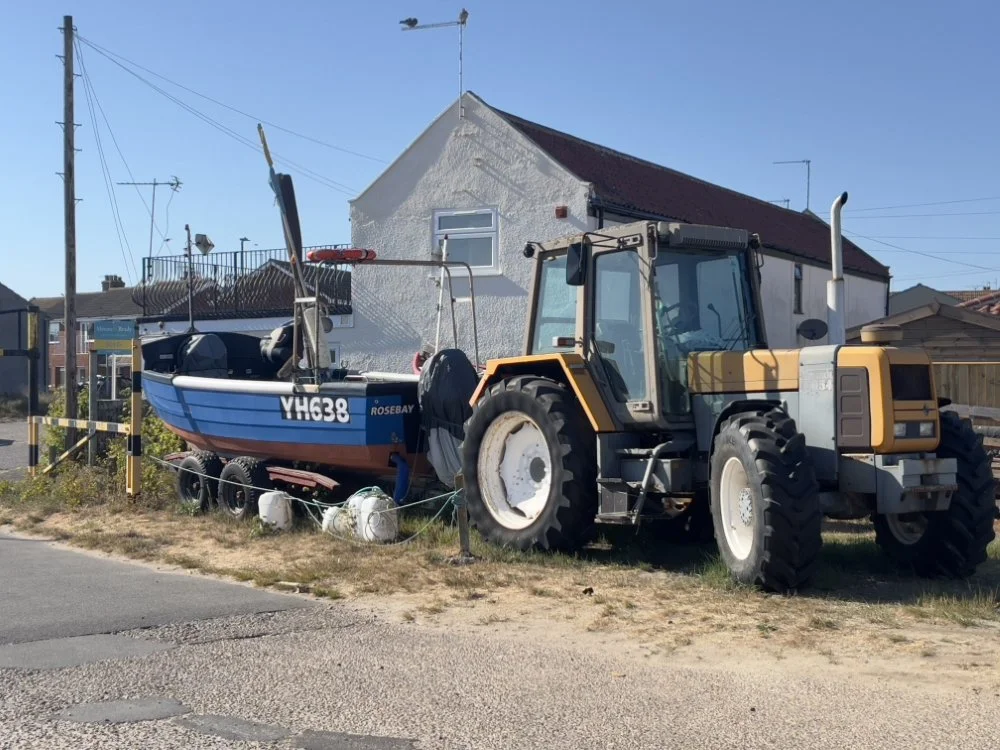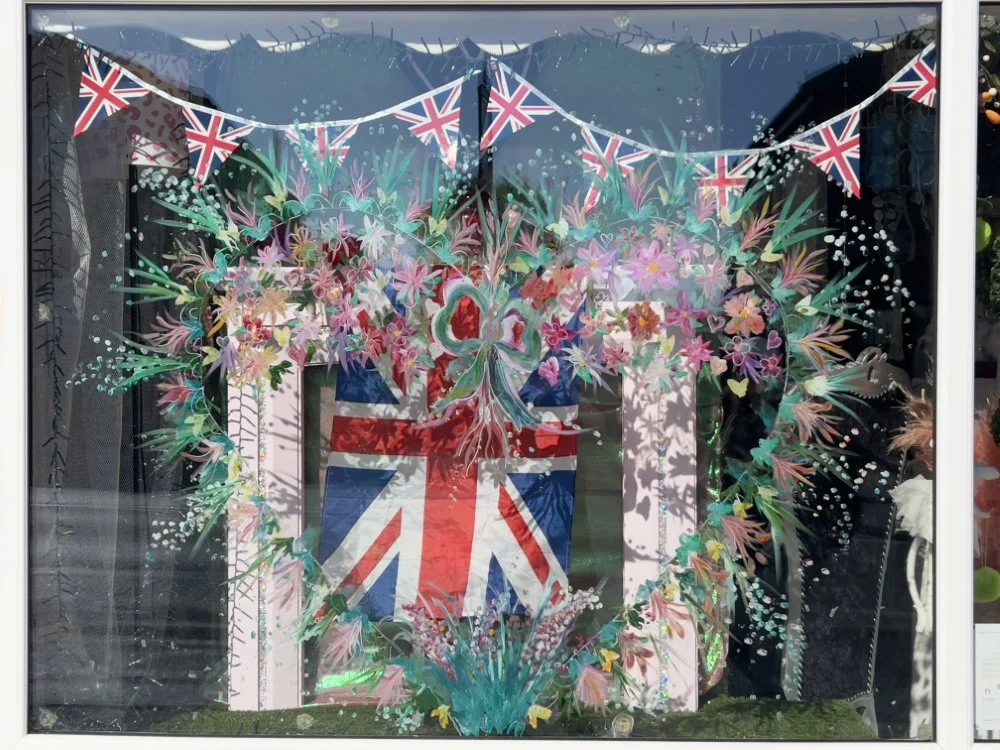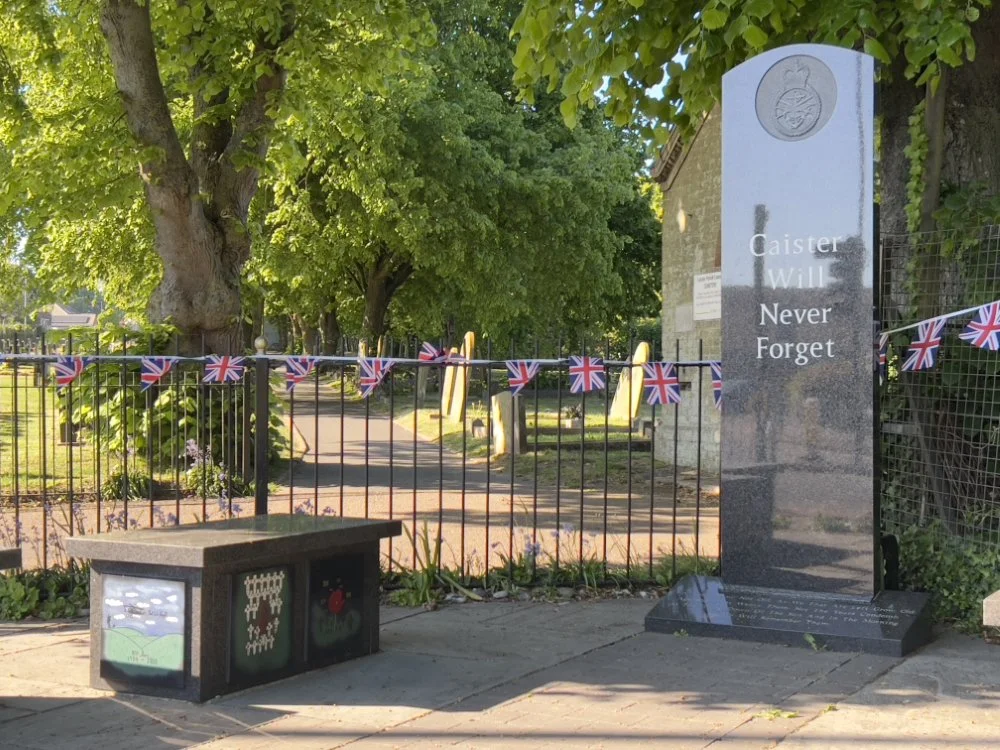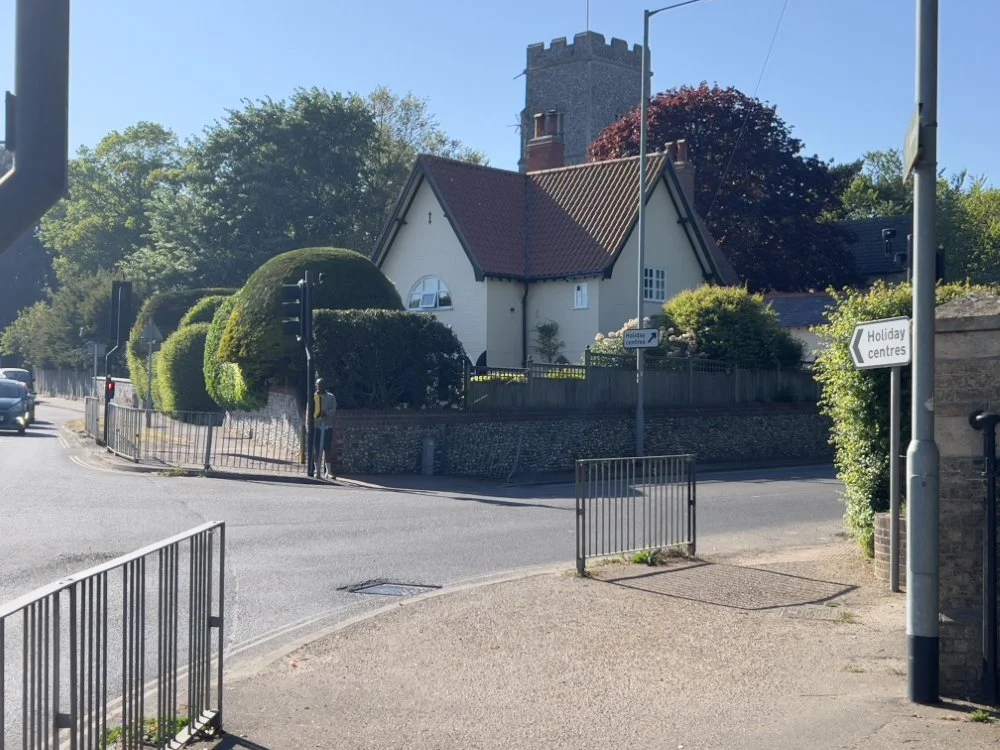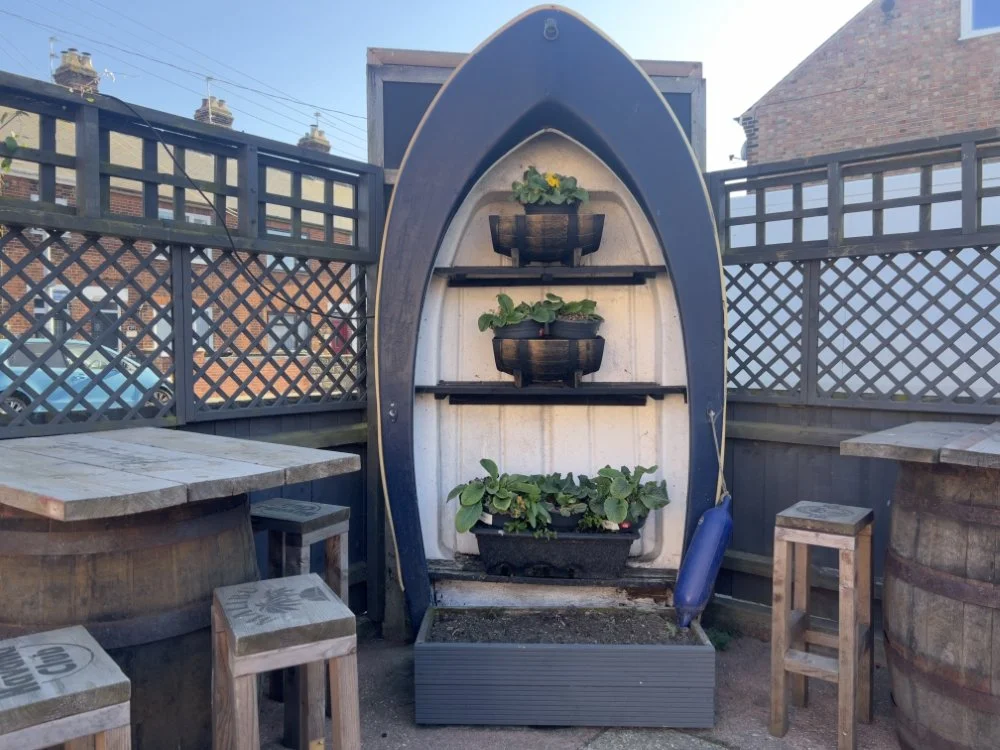2018 - Instagram
2018 - Instagram
2017 - Instagram
2017 - Instagram
2016 - Instagram
2016 - Instagram
Drawn Memories - AI Experimentation 02
Using AI Image Generators to express ‘Drawn Memories’

Although AI image generators continue to be controversial for a variety of reasons (and for certain, I agree with them), I can’t help but feel that if anything, they provide an opportunity to ‘anyone’ from ‘any’ background to create meaningful images that they otherwise couldn’t. Let’s take a moment to think about the 'reality of producing such photographs. It would mean sourcing a location that resembles the one I want to express. I revisited my childhood home, it has since been renovated; the wall paper gone, the stone features inside removed, the carpet gone. The space lost it’s meaning. Even if I were to find a space similar, then managing permissions to photograph inside them brings more challenges. Then there are the people, the adults, the children and the dog. All of this would involve hiring models, all of which would require finances that I simply don’t have access to.
I can’t draw, I’m useless at it, I get frustrated by it and I have no patience for it. Whilst this explains my sway to photography, one of the frustrations I have with photography is the inability to be able to photograph the past. It’s impossible - only the precise moment can be captured, not a moment before and not a moment after. And yet inside my mind there exists a whole host of visual material that in my world, cannot be fully expressed. This is frustrating, beyond an annoyance. It’s that frustration that draws me to AI images. My ‘Drawn Memories’ served as an attempt to bring them into the light, but since I have no ability for drawing, they exist as diagrams of places. As diagrams, they feel empty, void of the strength and the weight of the visual memories that are contained with them.
AI image generators have provided an opportunity to bring those visual memories to light. So what does this AI image represent?
Firstly, it’s purposefully ‘photographic’. I experimented with pen and ink styles which to some degree I felt were successful but they lacked that certain ‘reality’ that a photographic style provides. That sense, that feeling of reality is important to me. Let’s look at the various elements inside of this image all of which interact with each other.
The Boy.
The boy sits on the carpet, playing with something that’s intended to represent ‘Lego’. It’s difficult to tell what his emotional state is, but it is intended for him to express something of a sadness. He has red hair which is intended to represent something of my own hair in childhood. Therefore, the boy is a representation of myself. Although not guided by myself, he faces away from both the TV and the window.
The TV.
Rendering the TV in the AI image was admittedly annoying. The TV in my memory did not feature aerials such as this, but I can accept that, not everything can be perfect but it can be ‘good enough’. The TV itself closely resembles the one I remember but not precisely, a detail that again I can accept. What is specifically important in my memory is that the TV shows a football match. My Father used to enjoy watching a TV Show called, ‘Grandstand’. I never had any interest in this. I’ve never had an interest in sports and so programmes featuring football bored me. Hence the importance of the boy focusing on the Lego rather than the TV. The adult in this image represents my Father as he watches the TV.
The Father.
The Father, my Father, stands with an ironing board and iron. Although it was intended for him to actually be ‘ironing clothes’, the AI image generator struggled constantly to do this so again, this is an aspect of the image that’s not fully present that I have to accept. And I do, I’m okay with it, it’s enough. He’s focused on the TV whilst ironing.
The Window.
The window is a key feature of the memory and so for me, of the image itself. The sunlight beams through the window and spills into the living room. As it dances on the carpet the boy sits on, it suggests to me that there’s something enticing about it. And yet the boy sits with his back to it, too focused on the Lego. It also suggests that it’s warm outside, perhaps it’s summer. It’s a nice day, a time to play out. Outside the window we can see some other children who appear to be playing. There’s a contrast here, they are outside playing whilst the boy remains seated on the carpet.
The Dog.
The dog is as close to a representation of my pet dog from childhood as I could get. The dog sits closer to my Father than to me. That’s a key element here; the dog connects closer to my Father than to myself.
The Living Room.
The living room as a space is as close to reality and memory as I could achieve. It features a stone fireplace with a clock above it. There’s another clock on the mantle that was intended to be a carriage clock, but it was difficult to get the AI to render this. There’s a few paintings hung up on the wall that aren’t in the precise location. But for the memory that it’s meant to represent, all the other key features fit into place very well. The location of the sofas, the coffee table, the carpet, the fireplace, the TV and the window.
The Memory.
In my memory, every weekend I would spend time at home in the living room with my Father. He would be ironing and watching TV. I always remember the TV had to be on the lowest possible volume. Silence was a huge priority for him since my Mother, who worked night shifts was asleep upstairs. I would entertain myself by playing with toys such as Lego on the floor. Although I enjoyed this I would sometimes find myself experiencing bouts of frustration when whatever I wanted to build didn’t work out. I knew that I had to adhere to the strict rule of silence within this space, otherwise I’d risk angering my Dad. To manage these feelings of frustration, I would turn my back to my Dad and bite my hand as hard as I could. Our pet dog was here too. She would move between the Living room and the kitchen. I recall a time when she barked once and my Dad responded, in my memory, rather aggressively by picking her up and throwing her back into the kitchen. His desire to ensure silence was that severe. The key to this memory however is the connection between the my Dad and the children playing outside. My Dad would often make comments about the loudness of outside noises. Even as I child I recognised that you cannot control outside noises whatever they may be, and yet he’d chunter under his breath in disgust and annoyance at such sounds. Once, some of the children came knocking on the back door where the kitchen was asking if I wanted to come out and play. I immediately felt myself lighting up as this is exactly what I wanted to do. My Father immediately shut them down and instead chastised them for making such a noise from knocking on the door in the first place. They were sent on their way, and I was back to playing in the living room in this world of silence.
Of course, memories are complicated, and ultimately they are entirely individual. Looking outside of my own experience, I can understand that my Dad’s desire to ensure such regimented silence was an expression of love and care for my Mother. All he wanted to do was ensure that she had a comfortable, calm and above all quiet, ideally silent environment to sleep in during the day.
However, I continually find myself returning to this memory time and time again, even now. The sadness I felt as not being allowed to go out and play with the other children continues to haunt me, I’ve never let it go. I sometimes wonder why this is, why I still hold onto this painful experience. I sometimes feel that it’s in the strength of that emotion I felt at the time, that disappointment, perhaps even rejection, and the subsequent feeling of loneliness and isolation that came after it. Although I could say that I experienced something similar in other contexts in childhood such as at school, I sometimes feel that this memory persists because it was not only the first real time I felt it, but the point at which i felt it the strongest.
The Outcome.
Whilst the idea stemmed from being able to ‘photograph the past’, I feel this is more about ‘reconstructing the past’, but in a specific way that resembles something photographic rather than drawn or painted for example. The photographic style makes the memory feel far more real than anything else. Enough of the key features of the image are there, enough to represent the memory, enough to represent the emotion. There’s a feeling of success, of achievement too, but also something ‘final’ about it that feels much stronger than the ‘Drawn Memory’ ever did. The ‘Drawn Memory’, with it’s diagram-like representation was useful in that it provided access to some memories that I’d even forgotten about, but it always felt a bit further removed from the reality of the experience, perhaps even a little cold and so feeling as if it was closer to something more objective, scientific even; a study. This final AI image however, presents something that’s not only realistic but believable too. It also externalises the memory and the feeling of it. I find that especially true in the way that the boy has his back turned to my Father, my dog and the window with the children outside, but more than that, his back to the sun. It’s warmth only felt on his back whilst his focus remains on the Lego, more a source of frustration that contrasts with the fun the children seemingly have as they play outside. ‘Seeing’ something closer to reality also draws me to other questions too. For example, my Sister was younger than me, where was she in this memory? I presume she was out playing. This strongly suggests that I had the opportunity to go out and play with the others, and yet I didn’t. I clearly wanted to. I strongly remember the feeling of when they came knocking at the door asking for me. It was the feeling of being ‘wanted’, the idea that the made the effort to come and look for me, that was the key part of the feeling. And so perhaps, what this ultimately reveals is something of an attachment style, one that would continue to prevail throughout not only childhood, but adolescence and through adulthood to my late twenties and even early thirties.
May 2025 - Great Yarmouth
May 2025 - Great Yarmouth
May 2025 - Skegness
May 2025 - Skegness
May 2025 - Train (Between Skegness and Great Yarmouth)
May 2025 - Train (Between Skegness and Great Yarmouth)
May 2025 - Skegness and Great Yarmouth
May 2025 - Skegness and Great Yarmouth
May 2025 - Cleethorpes
May 2025 - Cleethorpes
May 2025 - Halifax 02
May 2025 - Halifax 02
May 2025 - Halifax 01
May 2025 - Halifax 01
'Together' - Response
'Together' - Response
I came across this graffiti and initially interpreted it to read, ‘Part’. Only upon reviewing it again did I realise that it was likely intended to be read as ‘Par’, but this didn’t matter to me. I chose to stick with the idea that it read ‘Part’ because of my initial response to it.
Given my recent work in therapeutic contexts, the word ‘Part’ refers me to the word, ‘Parts’ which further refers to the concept of ‘Parts work’. Parts work is often associated with a therapeutic model known as ‘Internal Family Systems’ (IFS). Although my training in therapy didn’t involve the study of IFS, I stumbled upon it when it transpired that my own therapist was trained in this very model. As we worked together she highlighted ‘parts’ of myself that arose in session. The concept of such ‘parts’ within the self was new to me and sparked a curiosity that lead into my reading further into IFS. What I discovered was a model that strongly resonated with me as I felt that it’s concepts fit well into my life experiences.
Simply, IFS considers ‘the self’ in conjunction with three other ‘parts’. These are,
Managers
Fire Fighters
Exiles
Given that I consider myself as being a ‘visual’ person, I often imagine these parts visually which I will further explore.
- Managers:
Managers are said to be the ‘protective’ parts of ourselves within the internal family system of self. Their role is fundamentally to keep all of the other parts of the self in check, to make sure that it’s protected from harm. This is a tough role of great responsibility and can become burdensome. When I find myself experiencing moments of stress or frustration, I visualise a manager at a desk, equally as stressed and frustrated. He’s losing control of his ability to manage ‘the self’. I have used Google’s Imagen AI image generator to represent this as below.

Image Analysis:
This image represents my stressed and frustrated ‘Manager’ part. Although the focus is naturally driven towards the manager, there are questions to be asked of the room itself. It appears to be an office of sorts, referenced visually by the ceiling tiles, other pieces of furniture and the presence of various files and folders. This was intentional since I associate ‘Managers’ as belonging in such contexts. I also feel that it connects to my personal experiences of working in high intensity office environments. The room appears in a great sense of disrepair; there are missing ceiling tiles, the windows are smashed, the plaster on the walls is peeling. There are papers strewn across the floor along with various cups. My intention here was to communicate the concept that the ‘Manager’ is far too busy, far too stressed, to give any sense of care or attention to his immediate environment. His priority is his immediate work, he has no time, interest or care for his surroundings, consequently, they have eroded over time. Given the rooms poor state, the intention was to communicate that this Manager has been stressed for an awfully long time. The view outside of the window shows deep rolling clouds and a thunderstorm. These visual elements aim to highlight the intensity of the stress the Manager is facing.
- Fire Fighters:
Fire Fighters are also protective, however, they respond very differently; reactively. When the self is struggling (because the manager is finding difficulty), Fire Fighters respond drastically by overwhelming the self in order to soothe. In reality, this can translate to a variety of behaviours. Some of the extremes may involve self-harm and drug taking whilst others can include distractions such as obsession and addiction. When I imagine the Managing parts of myself becoming stressed, I imagine they frantically call for emergency help.
In my view, the core of the self (or rather ‘myself’) is representative of a house. This is where I live. It is ‘managed’ by my Managing parts. When things are going well, the house is inviting. It’s perhaps not always as warm and as cosy as I’d like but it’s a comfortable enough place and above all it’s safe. When the Managing parts become stressed, I imagine a small fire starting in the house. As the fire builds the ‘Fire Fighting’ parts arrive to deal with this. As in reality, fire fighters do not care about the condition of the house, they will trample over anything and everything they can in order to ensure the survival of the house. For me, it is the aftermath of the Fire Fighters that has always been fascinating. It is only once the fire is out that I find myself standing in that aftermath, often feeling overwhelmed and even sometimes amazed that I’ve survived, that I realise what has happened. It is whilst standing in that aftermath where the distress lies. Again, I have used Google’s Imagen AI image generator to represent this as below.

Image Analysis:
The image displays a man standing in a living room of a house following the devastation of a house fire. He was intentionally rendered to mimic something of my own appearance at a specific point in my life. His clothes match my own of the time, baggy. He looks down at the ground, perhaps communicating a sense of shame and regret. Although the house is badly damaged, it is not entirely destroyed. It can be repaired, it can still be lived in, even if the experience of doing so isn’t as great as it once was. I chose to represent the features and furniture of this room to reflect the era of the 1990’s. This is because of the strong connection to my childhood which was experienced between 1990 and 1997. Specifically significant are the years 1994 and 1995 as these connect to experiences of childhood trauma.
- Exiles:
The question then remains, what is it that causes the Managers to be motivated to call in the Fire Fighters in the first place? The answer lies in the existence of ‘Exiles’. These are parts of the self that have been ‘exiled’ as a form of protection since they have been identified as emotionally painful. The system of the self, governed by both the Managing parts and the Fire Fighting parts, thus work tirelessly to stop such Exiled parts from remerging. But one may wonder, how did such Exiled parts develop to begin with? How and when did they become identified as such?
The answer lies within childhood experience. These are the parts that represent all that is emotionally painful which for me involves specifically, trauma and emotional invalidation. For me, the important aspect of IFS is to acknowledge that these parts of the self haven’t gone away, they weren’t ever completely eradicated, destroyed or even deleted. Instead, they were ‘exiled’, ‘banished’ if you will, to a part of the self that belongs in the depths of the unconscious mind. Below is another image produced via Google’s Imagen AI image generator to explore this.

Image Analysis:
Producing this image was significantly more difficult, since the AI image generator struggled to fully represent the concept but I felt this was the strongest from a variety. The house continues to represent the core of the self. It remains lived in by the self - myself. The man in the image has aged at this point, intended to now be in my late 20’s although elements of 90’s era aesthetic remains (the fireplace, wallpaper and furniture). This was intentional to represent that although time has passed, there remains significance in this era of the 90’s which connects back to my childhood. The ‘self’ sits looking away from the window. There is nothing apparent to look at. For me, this portrays the idea of the self existing (perhaps even just surviving) in the room rather than living in it. There has been no improvement to the building in comparison to the previous image as it remains in a state of disrepair, perhaps even worse so. Significantly, there is a boy standing at the window behind him. The intention was for the boy to be shouting in a bid to get the attention of the self. The boy represents an Exile from childhood and represents an emotionally painful part of that experience. He shouts and shouts but he remains unseen and unheard. Although Exiled, the boy, the emotional pain remains, and will continue to reappear until he is, at the very least, acknowledged.
For me, the profound realisation was the understanding that these Exiled parts were never truly ‘gone’, they were just dying to be heard. They’d scream, shout, intrude and invade. They’d express themselves through varying degrees of anxiety and depression. Sometimes subtly and at others so acutely that it would impact the ability to engage with day to day life. At present, whilst I feel that I’ve identified the majority of my Exiles there are still some that remain. It is the voices of those Exiles that I have been working to try to understand asking myself, ‘Where are they?’ and, ‘How did they come to be?’. Whilst it sometimes feel that they have been Exiled into the depths of my unconscious mind, they continue to find ways to attempt to be heard. It is only as recent as the past few years that I’ve come to understand that they present themselves predominately through two routes - both of which are visual. Firstly, through illogical emotional responses (such as hyperawareness and fear / or panic responses) to specific visual motifs such as staircases. And secondly, through a variety of motifs within my dreams expressed through Victorian architecture.

Stairs: May 2025 - Great Yarmouth
Let’s now consider my initial cultural response to this graffiti. My first thoughts directed me to the 1996 Baz Luhrmann film, ‘Romeo + Juliet’. My initial response took me to the scene when Romeo is banished from Verona. I recall this scene well, mostly because I had the CD of the soundtrack and I enjoyed the music that was chosen. Given my response to the word, ‘Parts’, I felt like the concept of IFS Exiles connected well to that of Romeo being ‘banished’. Interestingly, it is only when reviewing the film again that I found interest in Romeo’s response to banishment when considering this through the lens of IFS. Romeo expresses that ‘banishment’ is worse than death. I remember watching this film as a teenager and wondering why Romeo felt this way since I concluded death to be far worse. It is only as an adult that I can now understand Romeo’s perspective; banishment is torture. Is this not the same for our Exiled parts of self? It would be a much more tolerable experience of life if the things that caused us emotional pain would simply die. Instead they do not. They continue to live in a place that is inaccessible to us – within our unconscious mind. Rather than die they desperately seek attention, they desire to be heard whilst our Managing and Fire Fighting parts are equally desperate to keep them at bay. Whilst the Exiles are indeed emotionally painful, interestingly, they are also in pain. They are denied a voice and constantly pushed away. And although this is for the protection of the self as a system, the consequence of this can be dire. Is this no different than the experience of emotional invalidation? The system of the self constantly rejects the existence of the Exiles. The Exiles themselves demand to be heard whilst constantly being told by the self that their existence is ‘wrong’. And no matter how far away they are pushed, no matter for how long - there’s a persistence about them which prevails; ultimately they refuse to be quietened.
Romeo too, experiences something of this pain. Not only is he exiled from Verona, he is exiled from Juliet. He cannot see her, he cannot communicate directly with her. For Romeo, death would be a better alternative than the torture of becoming an exile.
And yet I chose not to use this scene here. Instead, I chose to use the scene in which Romeo kills Tybalt. My intention was not to focus on the action of Romeo killing Tybalt but rather than aftermath of it. In that moment Romeo’s Fire Fighting parts were at full pelt. Following the death of Mercutio, Romeo responded with rage, his Fire Fighting parts consuming him entirely as they desperately sought to alleviate the emotional pain of grief. Fire Fighting parts are reactive, they are not interested in the potential of long lasting consequence, they respond with immediacy and in Romeo’s case, brutally so.
But it is the aftermath that is significant. Following his killing of Tybalt, Romeo stands with eyes wide and fixated, stunned and dazed at the realisation of what has just occurred. The Fire Fighting (and fire fight) is over but now he must faces the consequences of his actions. It is precisely this sense of realisation within the aftermath that I aimed to convey. In my experience, I recall the emotional aftermath of my Fire Fighting actions. In the moment, the Fire Fighter’s are simply responding to protect, they are not concerned with the aftermath where feelings of shame, regret and negative self-talk emerged. The Fire Fighters did their job and effectively so but at what cost? I recall too the emotional aftermath of self-disclosure. In those moments, the Fire Fighting parts were seeking to evade overwhelming feelings of both emotional invalidation and loneliness. Immediately in the aftermath of such self-disclosure, yet again feelings of regret would emerge. But for that brief moment, the Fire Fighters considered themselves accomplished. They could not at all risk the danger of the Exiles emerging.
Finally, there is also the question of ‘why’ I was drawn to the film ‘Romeo + Juliet’. What was the driver for that initial choice? I remember listening to the soundtrack as a young teenager. At that age I understood the film to simply be about falling in love since I didn’t (and perhaps even couldn’t) fully grasp the complexities, power and the weight of the story. The film and the soundtrack also connect to one of my early experiences of romantic relationships (the sharing of music) which is potentially significant. The relationship didn’t end well and was objectively the result of my own actions. Although I was young and those actions were very immature, this had a significant negative impact on myself that I struggled for many years to find resolution with. Whilst I tried to ‘exile’ those experiences they never fully went away which eventually motivated me to reach out to in the hopes of finding resolution. Of course I’m greatly simplifying these experiences here, but my conversations with her after all those years were significant. My choice of the film then, not only aligns with my exploration of ‘parts work’ in IFS, but also of personal themes such as friendships, attraction, love, romance and relationships. There are far more deeper and complex avenues for exploration resulting from all of this relating to, emotional invalidation, immaturity (and maturity development), attachment style and (in my perception) the most fundamental of all, empathic connection.

















































































































































































































































































































































































































































































































































































































































































































































































































































































































